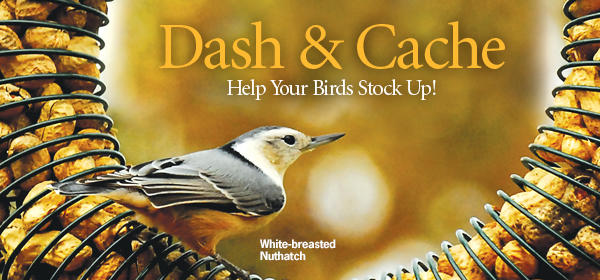
Being Seasonally Savvy: Cashing in on Caching
Right now chickadees, nuthatches, titmice and jays are hiding food to retrieve and eat later this season. This behavior is called “caching.” Caching helps birds survive during bad weather and when food sources are low. These birds can store hundreds of seeds a day. Each seed is placed in a different location and they generally remember where each one is, even months later.
By providing a foundational feeder filled with their favorite foods, you can help your birds with their caching needs. Recent research has shown that a consistent and reliable source of food helps birds to build body fat reserves, reduces their physiological stress and helps to maintain a healthy body condition.
Chickadees prefer to cache black oil sunflower seeds; often eating a small portion before hiding it in and under bark, dead leaves, knotholes, clusters of pine needles, gutters, shingles and in the ground. Chickadees caches more in the middle of the day when visiting feeders.
Titmice are rather particular. They choose the largest sunflower seeds available to eat and cache. Titmice and chickadees like to cache seeds within 130 feet of bird feeders; your yard or a neighbor's yard. Often, they tuck seeds into the bark and crevices of a wood pile or on a large branch. They even cache them under mulch in a garden.
Nuthatches prefer heavier sunflower seeds over the lighter ones. Be sure to have some sunflower chips in your blend, too, as they like these 25% more than ones in the shell. They prefer to hide foods on deeply furrowed tree trunks and the underside of branches. Nuthatches are also known to hide seeds under a shingle or behind wooden siding.
Jays love to cache peanuts, sunflower seeds, acorns and pine nuts. They are especially fond of peanuts in the shell. They bury them in the ground and are known to cache about 100 in a day; emptying a feeder in no time. Watch for them make repeated trips to your feeders (or an oak or pine tree) and fly off. They can travel up to two miles to bury their nutritious treasure.
